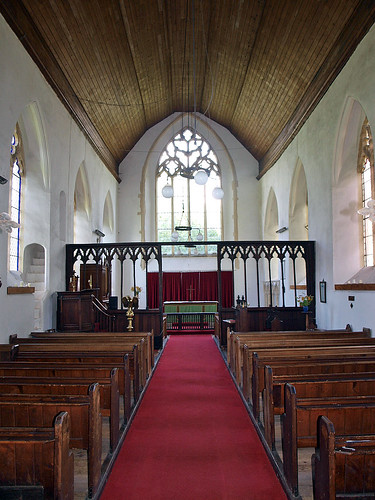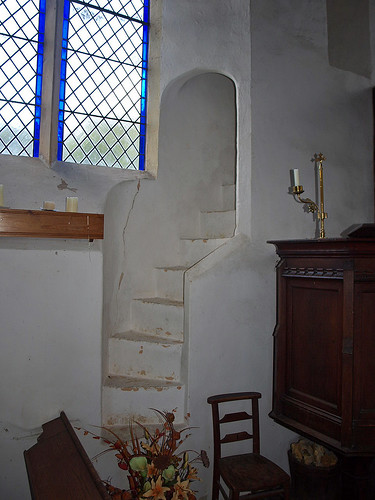ALL SAINTS. Round tower, the upper half recessed and as thin and tapering as a windmill. Nave and chancel in one, without a chancel arch, internally tall and generous in space. All windows tall, of two lights with ogee tops. The doorways have ogee tops too. The window tracery alternates between a reticulation unit and another simple motif. Ogee-headed sedilia and piscina. The whole is clearly Dec. - FONT. Octagonal, Perp. Against the foot four lions; against the bowl four lions and four demi-figures of angels. - SCREEN. Tall, of the same date as the architecture, see the shafts with shaft-rings instead of mullions and the few tracery motifs. - SOUTH DOOR. Exceedingly large. With good ironwork, also of the time of the building of the church. - COMMUNION RAIL. Early C18, with slender twisted balusters. - PLATE. Norwich made Chalice of 1567 and Paten of 1641.
WACTON. Cottages and farms among winding lanes, a church with an ancient story, and a big common at one end make Wacton a pleasant place. The Normans built most of its low round tower, now ivy-grown and with a red brick top peeping over the high roof of the nave; the nave itself, which has flint walls and fine windows, comes from about the time of Richard the Second, as most of the church does. The neat nave and chancel are divided by the upper part of a medieval screen with traceried bays. There are fine seats for the priests, Jacobean altar rails, an ancient door with original strap hinges, and a 15th-century font carved with symbols of the Evangelists on the bowl and four lions round the stem.



No comments:
Post a Comment